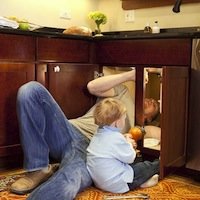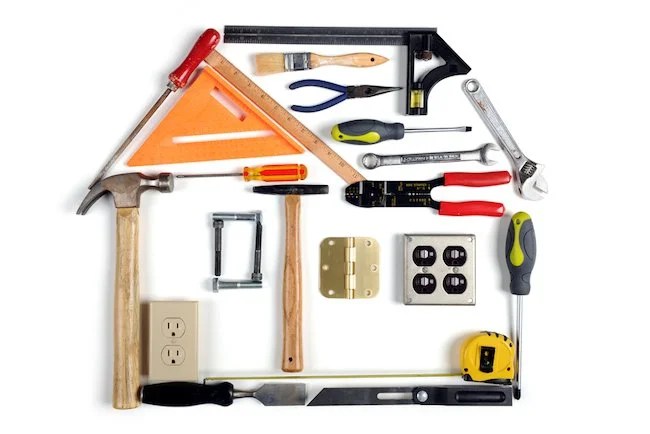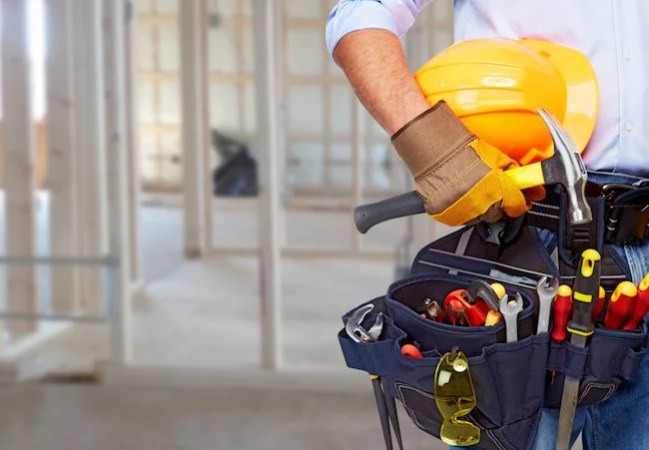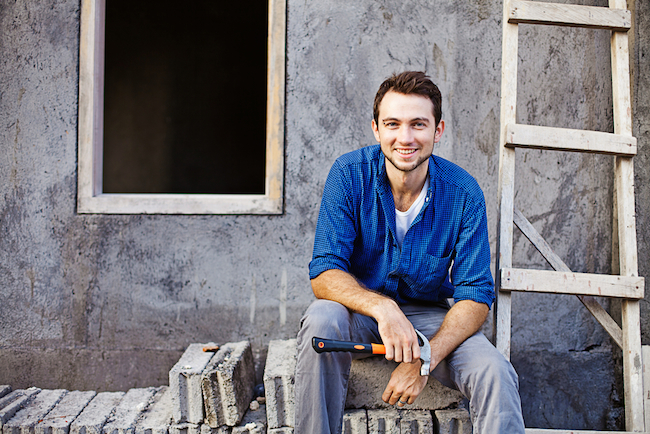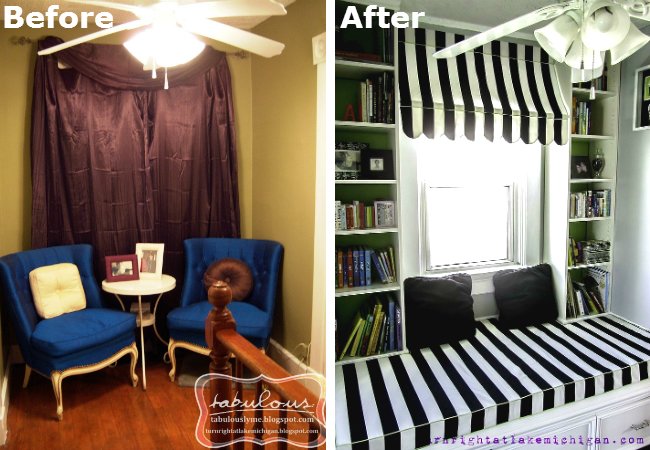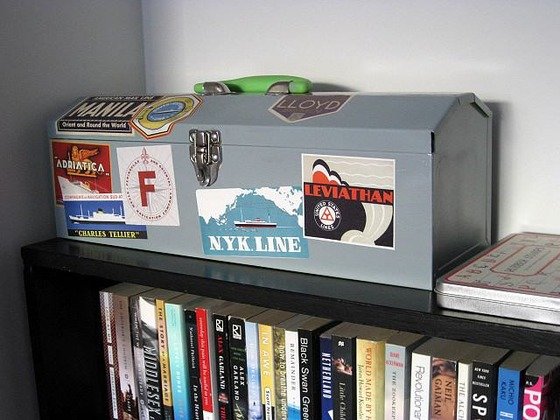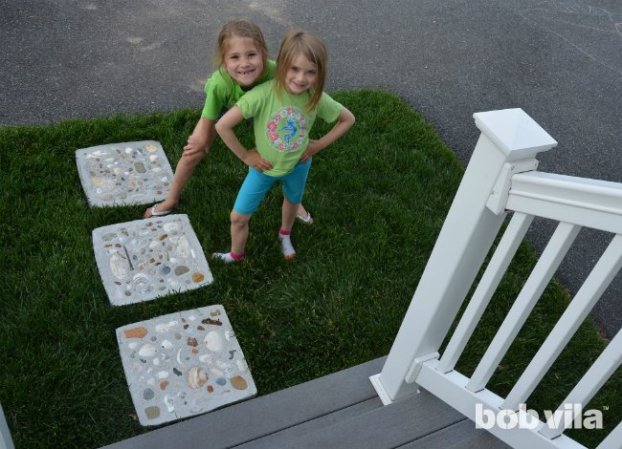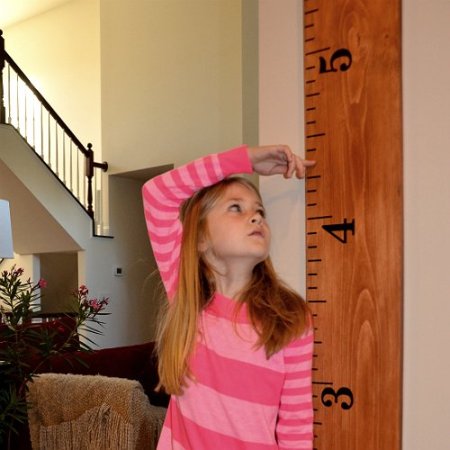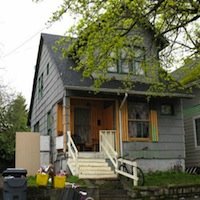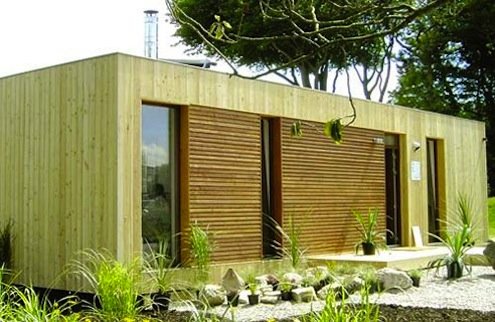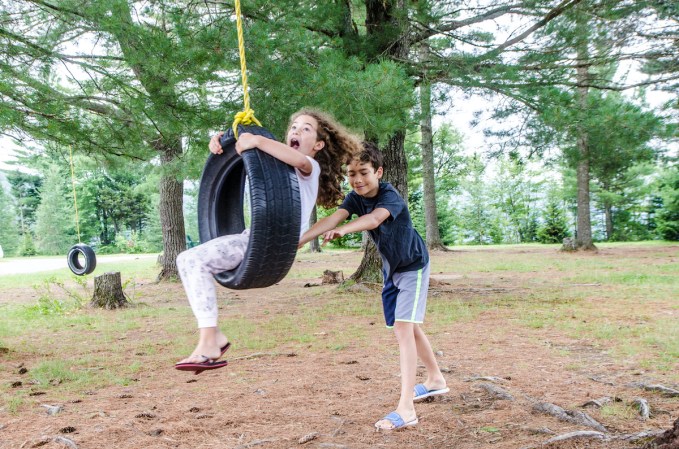We may earn revenue from the products available on this page and participate in affiliate programs. Learn More ›
Safety is an important consideration in any home renovation, but when children live in a home under reconstruction, keeping them out of harm’s way isn’t as simple as it may seem. Kids are curious, exploratory beings, and simply having an area with something new, interesting and dangerous going on is an attractive nuisance.
“Parents really need to talk to their kids who are old enough to understand and lay down ground rules for the renovation,” says Eric Phillips, vice president and general manager at DreamMaker Bath and Kitchen of the Triangle in Apex, NC. “And once the rules are there, parents really have to have the discipline to enforce those rules with their kids.”
The first step, of course, is awareness of the dangers that lurk for children during a home renovation.
Change Home Habits
One of the most difficult things for children to get used to during a home renovation is changing the way they use their home. This is especially true when a remodel is focusing on a room the kids use every day, like a kitchen, bath, or living area.
Phillips says the contractor and the family need to work together to set up alternative areas that will fulfill the family’s basic needs while the job is underway. “If I’m doing a kitchen remodel, for example, we’ll set up a temporary kitchen somewhere like a garage or extra room,” he says. “Just having a refrigerator, microwave, and crock pot in a separate area helps kids stay out of that area.”
For bathrooms, parents need to help kids remember to stay out of those areas, whether it’s by locking doors, putting up physical barriers like plastic sheeting, or adding signs around the house.
Prepare the Air
More and more children (and adults) suffer from allergies and asthma than ever, and the dust and particulates brought into the home through a large remodeling project can be damaging to the health of the air in the household.
Protecting the quality of the air you breathe is one of the most important steps you can take to keep your family save during a renovation, says the carpenter Christopher Ashe.
“Sealing off any HVAC ducting or vents in the area, hanging plastic sheeting, using disposable drop cloths and maintaining a clean workspace by vacuuming all horizontal surfaces with a HEPA-filtered vacuum at least twice a day, preferably more often, can really protect your family from the particulates and dust that can get into the air,” he says. And these steps are particularly important, he adds, if there are any materials like asbestos or lead paint that will be disturbed during the project.
Phillips says his workers seal off areas and HVAC units with plastic sheeting, and they also use “air scrubbers” while doing work like sanding drywall to protect the household’s air. “There’s so much more allergies and asthma in kids than there used to be, it seems,” he says. “We have to be very conscious of the materials, dust and particulates in households.”
Keep Tools Tamed
Many children’s toys have buttons to push and sliders to move that often result in colorful lights, funny noises, or fun moving parts. Now, consider how the average power tool would look to a three- or four-year-old.
“Parents should tell contractors they shouldn’t leave power tools there overnight—or plugged in and within reach when kids are in the house,” says Phillips. “Taking batteries out of cordless tools or moving those out of reach and unplugging corded tools is definitely a good idea.”
Just keeping track of where all the tools are can be a challenge, Especially with large jobs that aren’t necessarily isolated to one area of the house,. “At the end of the day, we like to have a ‘tool gathering’ where we collect all our tools and put them in one secure area,” says Dean Bennett, president of Castle Rock, CO-based Dean Bennett Design and Construction. “That’s good for us, too, because tools can get scattered during a day’s work. But you don’t want a kid finding a tool somewhere on the site and deciding to see how it works.”
Know the Hazards of Unfinished Areas
Even when tools are put away and workers aren’t present, there are still plenty of dangers on an unfinished work area.
“Sometimes parents don’t realize that even when a room looks mostly done, if something like the wall socket covers are off, that can be a real hazard to a kid because the sides of those switches are live,” says Phillips.
When important safety features are missing, a room is still a hazard, agrees Bennett. “Even something like having a toilet off with the wax ring exposed—that looks neat to a kid, but it’s full of bacteria,” he says. “Or, if a stair rail isn’t up on a new stairway, that’s a dangerous situation.”
Stay Out of the Path of Work
Workers moving around in a home with small children can be dangerous to the kids—and the workers.
“When guys are carrying in something like lumber or cabinets, they can’t see a curious little kid who might get in their way,” says Bennett. “Parents really need to keep kids out of the way in those situations so neither the kids nor the workers get hurt.”
Parents also need to realize that when workers are moving large equipment or materials in and out of the home, they probably won’t be too worried about shutting the door behind them. “It’s really easy for a little kid to slip out the door while it’s open and have no one notice,” Phillips says. “It’s just so important for them to be really well-supervised.”
Keep Waste Contained
Bennett recalled one of the few times that a child get hurt while he was working on a home —in that case, a kid was playing in a trash pile and stepped on a nail.
“The parents needed to keep the kid out of the trash pile, of course, but it would be less interesting to a kid if the trash had been in some kind of container,” he says.
Beyond hazards like sharp metal and nails, keeping used chemical containers out of reach is important because even after the contents are gone, toxic chemical residue can remain. Even a small amount of these substances can harm a child, so making sure they have no access, even to empty containers, is a must.
Be Conscious of Allergies
Beyond the dust and particulates that come from any remodeling job, Bennett notes that many people may be sensitive to some of the materials and chemicals being used in the project.
“With paints and primers, you can go with low-VOC [volatile organic compound] options to help reduce sensitivities, especially in kids,” he says. “Carpets are another problem sometimes because they have lots of formaldehyde. Sometimes it’s best if the family can just take a week-or-so vacation after these products are installed to let them off-gas without harming anyone.”
Bennett says the danger is reduced by opening windows and using air filters after painting or installing materials with formaldehyde (like composite-wood cabinets or carpets). There are also materials available that don’t harbor the dangerous chemicals. For instance, look for paints and finishes with “no-VOCs” on the labels.
Ashe says while it may cost a bit more, looking for more environmentally friendly choices can pay off in the long run, especially when children are involved. “You can always find an eco-friendly alternative,” he says. “It may cost more, but sometimes it’s a small price to pay.”
Choose the Right Contractor
While conscientious parents are the best way to keep kids safe during a family’s remodel, choosing a contractor who understands and appreciates the unique challenges that come with remodeling a home with children is an essential step toward ensuring a safe renovation.
1. Choose certified contractors. Too often, people mistakenly hire the contractor who offers the lowest price with lots of assurances, which, according to Phillips, can end up a costly mistake. “There are a lot of operations that are really just two guys and a fax machine, and they’re not reputable,” he says. “It can be expensive to license and insure a contracting business, but it protects you to choose someone who may cost a little more but is regulatory compliant.”
2. Find out about safety practices and record. While everyone wants a safe contractor, families in particular should concern themselves with a company’s safety record because a low injury rate usually means the contractor follows good safety practices, like keeping work areas clean and storing tools safely.
3. Ask how they feel about kids in the house. Before deciding on a contractor, ask about any issues or concerns he may have with children around a construction site. A good contractor should mention ground rules for kids, their own safety practices, and any experiences they’ve had working with families living in a house while it was being remodeled.
